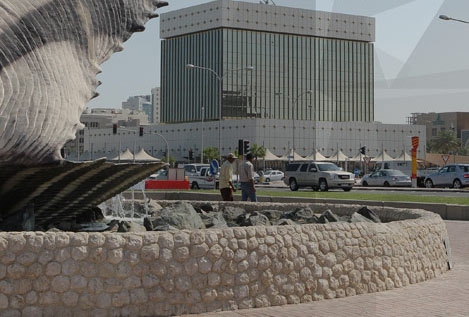Capital markets in Qatar should receive a boost from recently announced reforms that clarify oversight, broaden access and simplify transactions. Through such measures, the authorities and the private sector are hoping to increase liquidity and activity in a market considered to have significant potential.
In mid-July, the authorities announced long-awaited reforms to its financial sector that pass regulatory authority for the Qatar Exchange (QE) to the central bank, increasing the settlement time for stock trades and allowing banks to create brokerage divisions, the international press reported.
A circular issued by the Minister of Economy and Finance (MEF) confirmed that the Qatar Central Bank (QCB) would be replacing the Qatar Financial Markets Authority (QFMA) in overseeing the stock exchange, a further move toward creating a single regulatory body for the market.
This follows an announcement five years ago that the country would create a unified organization to streamline and clarify the regulatory environment, a process that has proved complex. The benefits, however, could be considerable. “Qatar had the QCB, which regulates banks and investment firms; the Qatar Financial Centre Authority (QFC), which regulated investment and other financial services firms; and the QFMA, which regulated exchange listings of stocks, and potentially listed bonds and listed funds,” George Shehadeh, the CEO of Amwal, a Qatari investment firm, told OBG.
“Financial services firms frequently engage in activities that come under the turf of more than one regulator,” he continued. “For example, listed funds could be regulated by the QFMA, while the fund manager is regulated by the QCB or QFC. While mature markets may benefit from having these choices, in a market such as Qatar, which is in its early stage of development, the benefits of simple, unified and consistent regulation are much higher. This lowers both regulatory complexity and operational cost, which are critical to the success of the local asset management industry.”
The MEF circular also contained a provision to expand the timeframe for trade settlements, allowing “trustworthy establishments and individuals” to pay brokers three days after a trade, as opposed to the upfront payments previously needed. The QFMA will decide which organizations and individuals are “trustworthy” based on brokers’ recommendation.
Analysts expect the measure to encourage Qatari firms and individuals to engage more actively in the market. This should help increase liquidity, which has long been a priority for the authorities and the private sector alike. However, the changes may not transform the market dramatically, as some international investors already operate on the exchange through banks.
Perhaps as significant will be changes that allow Qatari banks to take brokerage licenses, which has attracted the interest of several financial institutions. This should increase the visibility and accessibility of capital markets to institutional and individual investors alike.
This has been a slow year for the QE. Nonetheless, Qatar saw the Gulf’s biggest equity capital markets transaction this year, with a $1.9bn bid by Doha-based telecoms firm Qtel for shares in Kuwait's National Mobile Telecoms (Wataniya). The exchange is also likely to benefit from an anticipated uptick in regional initial public offering (IPO) activity, expected in the latter half of the year. Thus far, three IPOs are expected: Qatar First Investment Bank, Mackeen Holding and Al Jazeera Finance.
The MEF has encouraged the QFC to help Qatari-owned companies in particular to list, which both provides firms with capital and increases market liquidity and activity. Industry leaders hope that small and medium-sized enterprises (SMEs) will increasingly use listings to tap new sources of capital. Meanwhile, in July, international ratings agency Standard & Poor’s said that Qatari banks should look to bond issues to fund expansion, rather than relying too heavily on deposits.
Qatar’s capital markets have a great deal of potential – while the domestic market is small, the country is, according to most analyses, the world’s richest per capita and has one of the fastest-growing economies in the world. A substantial proportion of its population are high net-worth individuals, pointing toward a significant pool of individual investors, and the regulatory infrastructure is increasingly well developed. The next step to achieving this potential is likely to be increasing and broadening participation, from both companies and investors.
Oxford Business Group
28 August

























































